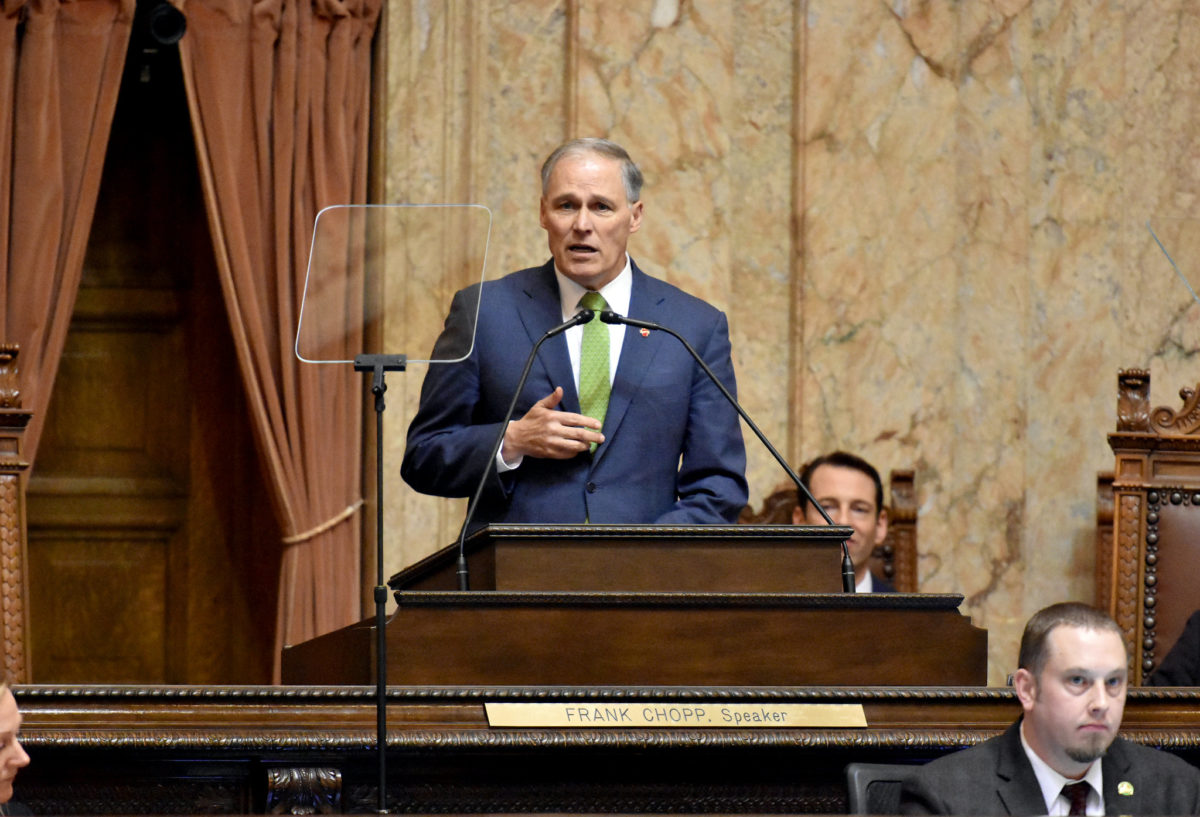From pv magazine USA.
The progress of state-level renewable energy legislation in the U.S. resembles a house of mirrors. Legislation is being introduced, voted on and passed at a breakneck pace as more and more states embrace the energy transition – and no two are exactly alike.
Now, focus has shifted to Washington State, where House Bill 1211 has passed its namesake chamber by a margin of 56-42. HB 1211 is the companion bill of Senate Bill 5116, which would require the state to adopt 100% carbon-free power by 2045 as well as phase out coal by 2025 and require all electricity sales to be carbon-neutral by 2030. The bill has now passed in both chambers, meaning it is destined for the desk of Governor – and Democrat presidential hopeful – Jay Inslee after it goes back to the senate for reconciliation following minor amendments in the House.
Since Inslee proposed the plan to begin with, there is little doubt he will sign the bill.
If all goes to plan, Washington will become the fourth U.S. state and sixth state-level jurisdiction to pass such a measure, joining Hawaii, California, New Mexico, Puerto Rico and Washington D.C.
An interesting tidbit in the bill comes from section 5, subsection 4, which states: “In making new investments, an electric utility must..: (c) In acquisition of new resources, rely on renewable resources and storage.” There again is the symbiotic relationship between renewable energy and energy storage married in legislation.
Solar foundations
Popular content
Washington is a particularly interesting case study for the shift to renewables. The state gets around 68% of its energy from hydroelectric resources, with coal and natural gas contributing 24%, though their days are numbered. Of the final 8%, half comes courtesy of the Columbia Nuclear Generating Station – the only nuclear power plant in the Northwestern United States.
While those numbers are not inspirational to the solar oriented, they are due a shift. Flying in the face of the state’s gloomy-skies stereotype, the arid lands east of the Cascade Mountains are prime for future development and could help ease a looming power generation gap.
Until last year, the state’s installed solar capacity was dominated by residential PV, with small blips of commercial development. But when 2018 rolled around, a utility scale PV explosion occurred, to the tune of roughly 30 MW – which may sound small but represents around 17% of installed solar capacity in the state.
The opportunity for solar is there, and hopefully the state’s PV industry will not be mired in the development limbo the proposed 75 MW Teanaway Solar Reserve has been in for the better part of a decade.
Either way, the energy revolution keeps marching, with no signs of slowing.
By Tim Sylvia
This content is protected by copyright and may not be reused. If you want to cooperate with us and would like to reuse some of our content, please contact: editors@pv-magazine.com.


1 comment
By submitting this form you agree to pv magazine using your data for the purposes of publishing your comment.
Your personal data will only be disclosed or otherwise transmitted to third parties for the purposes of spam filtering or if this is necessary for technical maintenance of the website. Any other transfer to third parties will not take place unless this is justified on the basis of applicable data protection regulations or if pv magazine is legally obliged to do so.
You may revoke this consent at any time with effect for the future, in which case your personal data will be deleted immediately. Otherwise, your data will be deleted if pv magazine has processed your request or the purpose of data storage is fulfilled.
Further information on data privacy can be found in our Data Protection Policy.